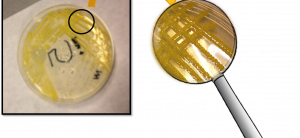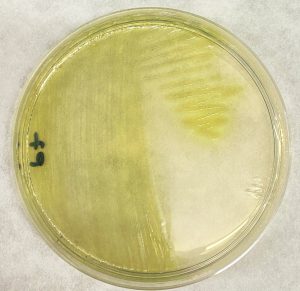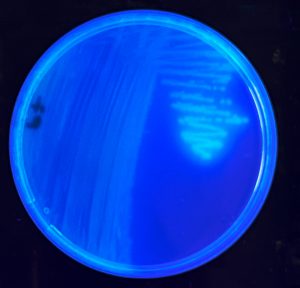Pigment production
Overview
Its formation in many microorganisms depends on the presence of light, the composition of the substrate and the incubation temperature.
Some bacteria can synthesize pigments that would be observed in both general culture media and also in media with other substrates.
The Pseudomonas synthesize, according to their species, different pigments such as for example the pyocyanin that turns cultures blue, which means that they can be identified. The fluorescein or pyoverdine turn colonies a fluorescent green color. This pigment has Pseudomonas fluorescens.
The S. aureus colonies also look pigmented in general culture media. The species is named after the golden color of the colonies.
Some species of Micrococcus, such as M. luteus and M. roseus produce yellow or pink colonies, when they grow on a solid medium.
Carrying out the practical
A nutrient agar plate is inoculated using the inoculation loop technique or the streak plate method.
Incubate at 37ºC for 24 hours.
After the incubation period the color of the colonies is observed.
Example of the color of Micrococcus luteus in nutrient agar.
Example of the color of Pseudomonas sp in nutrient agar and under UV light.
Apoyo a acciones de Innovación Docente – Vicerrectorado de Estudios / Consultas e incidencias técnicas- Tlf: 96 522 2059 –


